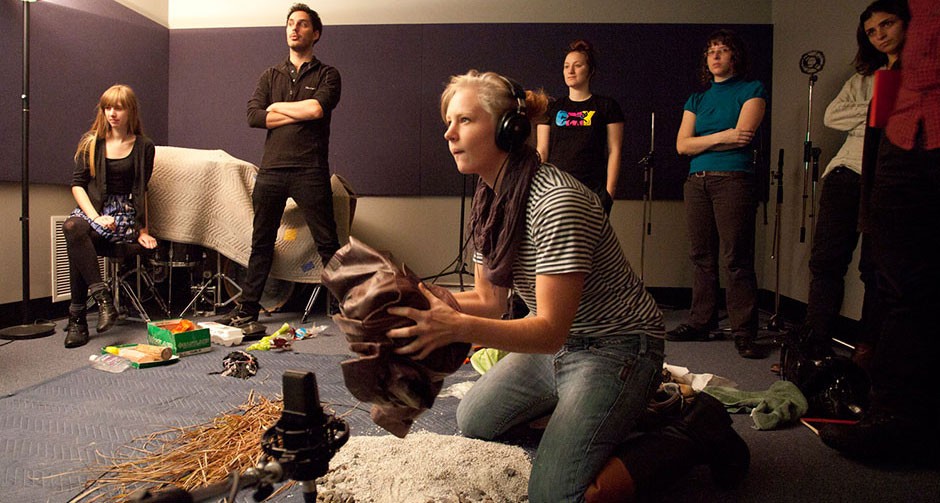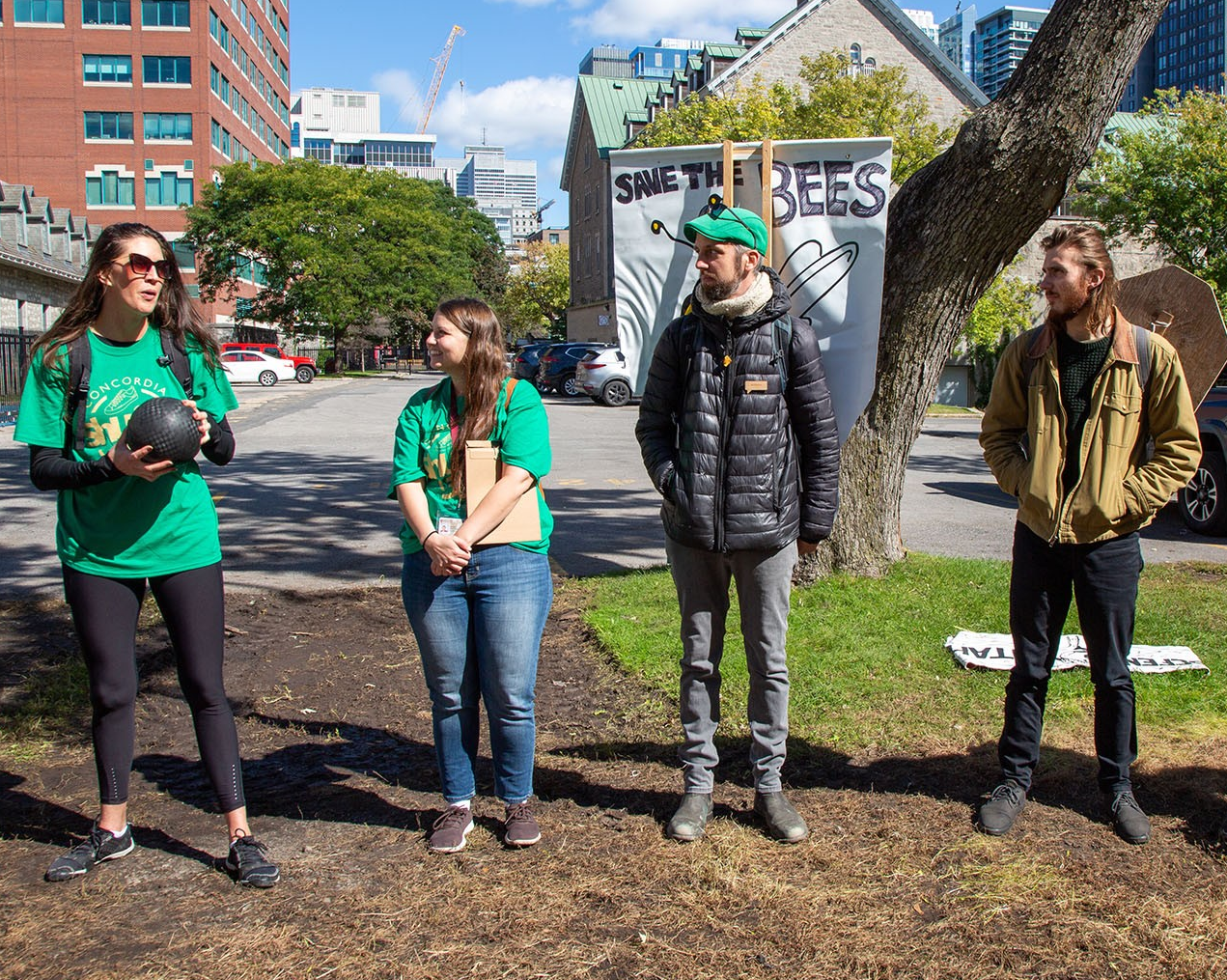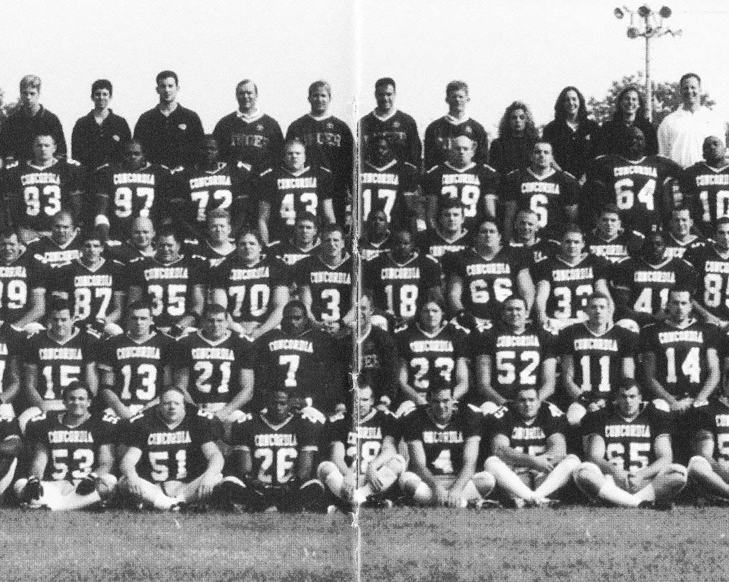From tinkling chandeliers to Maurice Richard's ice skates: Concordia honours the late Foley artist Jérôme Décarie with a scholarship for sounds
 Foley recording class at Concordia's Mel Hoppenheim School of Cinema
Foley recording class at Concordia's Mel Hoppenheim School of Cinema
Foley artists have an invisible yet crucial role in moviemaking.
They create the background noises that enhance a film: the tableware clatter of a dinner party, the footfalls in an alleyway, the surges of a springtime melt, the pounding of flesh in a fistfight.
Jérôme Décarie was a renowned and creative Foley artist who worked on more than 100 films, including the Oscar-winning The Red Violin and Les Invasions Barbares.
A year after his death from cancer at age 53, his mother and noted film producer Marie-José Raymond has established an endowment in his memory with $30,000 at Concordia's Mel Hoppenheim School of Cinema.
Décarie was known as “One-take Jérôme” for his deft work. Filmmakers would hold post-production until he was available and Raymond still gets email from directors who miss her son. When Denys Arcand visited him in the hospital, he asked if Décarie could nip out for a job.
Décarie grew up in Montreal and area, steeped in film production thanks to his mother and stepfather, director Claude Fournier. He attended Cégep du Vieux Montréal in communications and, being musical, spent most of his time at the Cegep’s radio station as well as working as an assistant in a sound studio.
He decided to pursue Foley, and after some hands-on training in Montreal, Décarie interned in Paris — where Foley artists are in the artists’ union, not with technicians as in North America.
His first job was to recreate the tinkling of a chandelier that Gérard Depardieu moves in Jean de Florette, Raymond recalls. “When he came back, he said, ‘Mummy come and see the chandelier!’ So we saw Jean de Florette to see the chandelier.”
Back in Montreal, Décarie built up his tools of the trade. For his studio Décarie kept different types of clothing, like leather jackets and nylons, needed to recreate the sounds of characters’ movements.
He had a wide array of footwear, from clogs to running shoes, and different surfaces like tile, wood, and a patch of lawn. Raymond relishes the memory of Décarie going shoe shopping with his teenage daughter, only to mortify her by trying on and buying loads of women’s heels and sandals for work.
For hoofbeats, Foley artists bang coconut husks together, à la Monty Python.
But for the film Fierro… l’été des secrets, which took place on an Argentine ranch, Décarie sourced real horse hooves, boiled them for three days (the smell of which prompted a concerned neighbour to summon the police) and then cleaned out all the cartilage, dried them and filled them with resin to get the required heft.
Foley is physically demanding work, Décarie said in a 2016 video.
A about famed hockey player Maurice Richard proved a challenge, as indoor rinks are too noisy to record in. So Décarie brought two-feet-by-three-feet ice chunks to his studio, got on his knees and recreated the sounds using skates on his hands.
“A day spent skating with your hands is tiring!” he laughed. The next day he donned hockey gear to record himself banging into walls.
Sports films are clearly tough on Foleys. For boxing documentary The Steak, Décarie spent two days in gloves hitting a pig’s head to capture the jaw-smashing fights of Gaétan Hart.
Accuracy in sound mattered greatly to Décarie. For Clandestins, a movie about refugees crossing the ocean in a shipping container, he recorded the echoes and ambient rattles in an actual container.
Raymond notes, “It’s a very silent film, and the weight and the aggressivity, everything goes through the noises, the things they move around. Like a box of nuts someone plays with that’s annoying.”
Because of their different surnames, Raymond was often privy to others commenting on her son’s work without realizing she was his mother. “People would say, ‘It’s extraordinary!’ No one knew it was my son.”
Décarie had a comedic touch, too. Raymond recalled a scene in Les Pots Cassés by François Bouvier, in which a man talks on the phone and is idly cleaning his toenails with his girlfriend’s bobbypin.
“Everyone laughed, not because of a close up on the toes, but because the noise, the sccrrcchh sccrrcchh that Jérôme put in,” Raymond recalls.
With more than 40 years in film production, Raymond has always appreciated the “excellence and versatility” of film crew who trained at Concordia.
She chose to donate to the Mel Hoppenheim School of Cinema because she likes how students are taught the different aspects of filmmaking and are thus able to make an informed choice about their career direction.
Raymond wants more students to understand and consider Foley as a career, and anticipates the endowment will not only achieve just that, but could also fund internship opportunities abroad.
As well, many film notables who were fans of Décarie’s work have offered to speak at the Hoppenheim School in his honour.
Support the Jérome Décarie-Foley Scholarship Fund at Concordia's Mel Hoppenheim School of Cinema by making a donation online, or calling 514-848-2424, ext. 7354.




